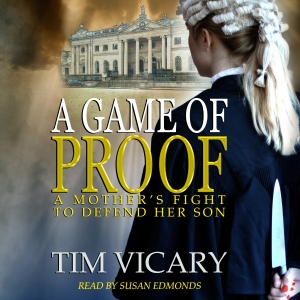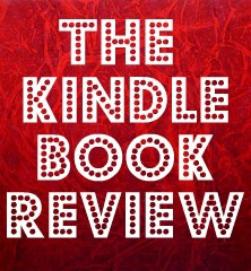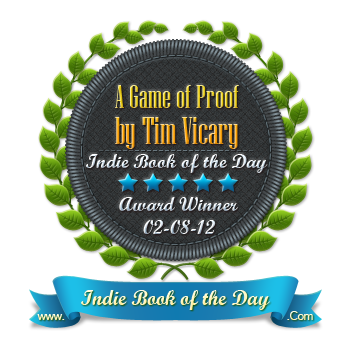Sometime around March last year I got an email from ACX, the company behind Audible, telling me that their previous ban on UK authors sending recordings to them was now lifted. I was delighted, and immediately set about recording an audio version of one my books A Game of Proof. It would be easy, I thought. Just get a decent recording device, start readings, and hey presto! There you are.
How little I knew! I started with a small Sony handheld recorder, cost about £50. Pretty good, actually for what it is, and the ACX people were fairly polite about the sample. But even though I made a lot of effort, trying to cut out the echo from hard surfaces by draping my study with towels and curtains and duvets until it looked like the site of a teenage sleep-over – the recorder really wasn’t good enough. I had to invest in some serious kit, I realised.
So I bought a proper Rode microphone with something called a Focusrite audio interface – the plug in between the mike and the computer – and two different types of microphone stands. The microphone, by the way, has something called ‘phantom power’, which struck me as very cool – it means it gets its power from the computer, I think.
It was immediately clear that this setup produced a MUCH clearer sound than the little Sony, smart though that was. The trouble was, this microphone is so sensitive that it records everything – a tractor ploughing a field half a mile away, a passing plane, birds singing in the garden, all sorts – including the hum of the computer fan. So we couldn’t have the mike in the office with the computer, we realised, and we had to find the quietest possible place in the house.
By ‘we’ I mean myself and the actress, my beautiful, talented and very patient wife Susan Edmonds, without whom this project would have been impossible. I don’t know anyone who can read as well as her, and even if I did, no one else would put up with reading 44 chapters, some of them two or three times over, while the trainee recording engineer (me) struggled to learn his job and avoid fatal mistakes. Especially when I tell you that our recording studio was – guess where?
In the airing cupboard. Well, our airing cupboard is quite large, you see, large enough to walk into. And it’s in the centre of the house (no windows or outside walls) and full of soft clothing, of course – especially when we’d draped the door and any bits of wall which weren’t already covered. So there’s not much echo, just a flat sound. And poor Sue sat in there for hours, days, months, bringing my wonderful words to life, while I sat in the study nearby watching the visual trace of her words on my computer screen.
When I say days and months, I do mean exactly that. Not all day of course but most days. It’s pretty demanding work reading aloud, if you do it properly, bringing as much drama and expression as you can to the characters in the story. And there are some very dramatic and emotional scenes in this book. Sue was often tired and drained after a performance.
But at least her day’s work was done after she had finished reading. (Unless I asked her to do it again) My days lasted a lot longer. Because, it turns out, the work of the performing artist is only the first and least time-consuming part of the process. The ACX people say that it takes a skilled recording engineer three of four hours to edit and produce one hour of finished sound. Note the key words ‘a skilled recording engineer’. The words ‘amateur’ or ‘beginner’ are not in that sentence, are they? But that, of course, was what I was, all those months ago. I had to learn it all from scratch, reading the ACX instructions carefully and scrounging advice from anyone I could find. It’s a fascinating process, and I enjoyed it in a masochistic sort of way, but I think I must have listened to every phrase in every chapter of that book about ten times. And several chapters had to be re-recorded two or three times before we got them right. In fact, it took almost as long to record and edit the audiobook as it did to write the story in the first place.
But we did it, in the end. Last week the book was finally published on the Audible website, and is available to be downloaded. It’s not perfect, but I think – I hope – it’s good enough to be worth listening to. If there are technical faults, they are mine. But I’m sure about one thing, anyway, because I’ve listened to it many times – the actress, Susan Edmonds, reads the book very well indeed. She gives a recognisably different voice to each of the main characters, and she brings real drama and emotion to all the scenes which need it – of which there are many. And for me, the guy who wrote the tale, it’s a real pleasure to listen to it brought to life in this new way. I do hope other people enjoy it too.
You can hear a sample of the book on Soundcloud here, or on Amazon here. And if any of you download the audiobook and listen to it, please post your comments and let me know what you think.
















Just listened to the sample! Well Done Sue. It was a treat for me to sit and listen to Sue talking! What a huge amount of work this must have been for both of you and what an interesting story you have written all about it!
Thanks for sending this to me.
Thanks Michelle and Drew. She does read well doesn’t she? But it took ages. Now I’m trying to persuade her to do the next one. Tell all your friends!
Pingback: What's the point of audiobooks? - Tim Vicary
Pingback: An Indie Author's Year - Tim Vicary